Product design engineering: Mechanical FEA, prototyping & manufacture
Engineering for success
Making a one off prototype is very different to a production run. Throughout the design development phase we are always considering materials, their manufacturing processes and assembly. Often we work as a wider team integrating any electronics, mechanics or software into a production ready handover package.
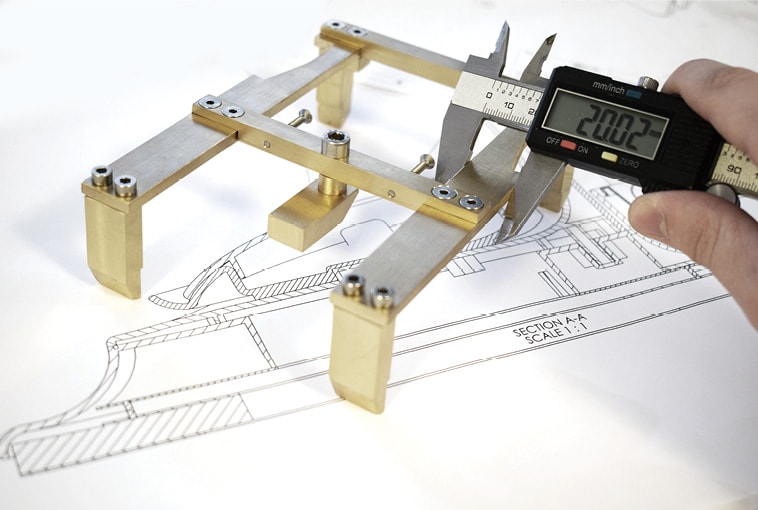
Engineering overview
Every aspect of the design: every screw, bolt, and washer, every material and every manufacturing process, must be chosen and detailed in the engineering stage. Technical drawings are expanded, and we often make a final pre-production prototype before handover to the manufacturer, so they have something physical as a benchmark. Our attention to detail here has often saved clients’ money and heartache in the long run. For mechanically complicated projects, we work with our team of engineers and specialists to check that every part will perform long-term as we have specified. For projects with bespoke electronics, we team up with a group of electrical engineers and programmers who we have successfully collaborated with for years on several projects such as IoT devices.

Mechanical engineering, FEA, and FMEA
We evaluate the best process to produce each part and often carry out FEA – Finite Element Analysis, ensuring we can optimise the strength of the component, and that it will absorb stress and flex in the desired way. We may also use FMEA – Failure Mode and Effects Analysis, to analyse risk so as we can take action and reduce the possibility of failure, and to ensure that if it were to fail, it would do so safely.
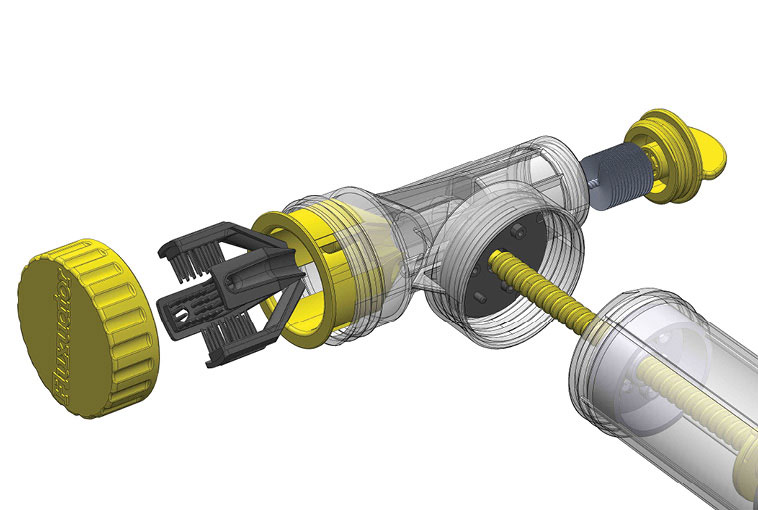
Design for manufacture and assembly (DFMA)
As the client you will have signed off a works like, looks like prototype which you will have had tested with your target market, reviewed by your marketing and branding teams, and will likely have been reviewed by a safety test house. To get to that prototype we will have considered materials and considered the design for manufacture and design for assembly, (DFM and DFA). It is the next stage - production engineering, that we will look at each component part and design it so as it can be manufactured as efficiently as possible. Different components require different manufacturing processes, metal parts are often fabricated, die cast or extruded, plastic parts are moulded, formed or extruded.

Engineering drawings
During the detail design and development stage we are working with a selection of our manufacturers and supplier, we can tune the design and cost to their processes. This helps us produce the engineering hand over package in the format that they require. For the production of moulds, we utilise 3D CAD files and a 2D drawing pack along with a PPR (product profile report).
Our high detail engineering drawing packs are used on the production line to asses the quality of each component.

Fabrics
Many of the products we design and develop have soft elements such as bags, ruck sacks, soft toys, and baby products. Kirstin, our design manager has worked with fabrics for over 20 years and has produced outfits for fashion dolls through to designer bags. Every manufacturer, whether they are in the UK, Europe or Asia have individual preferences on how to make a product. This is discussed further in production.
Product design engineering: Mechanical FEA, prototyping & manufacture
Engineering for success
Making a one off prototype is very different to a production run. Throughout the design development phase we are always considering materials, their manufacturing processes and assembly. Often we work as a wider team integrating any electronics, mechanics or software into a production ready handover package.

Engineering overview
Every aspect of the design: every screw, bolt, and washer, every material and every manufacturing process, must be chosen and detailed in the engineering stage. Technical drawings are expanded, and we often make a final pre-production prototype before handover to the manufacturer, so they have something physical as a benchmark. Our attention to detail here has often saved clients’ money and heartache in the long run. For mechanically complicated projects, we work with our team of engineers and specialists to check that every part will perform long-term as we have specified. For projects with bespoke electronics, we team up with a group of electrical engineers and programmers who we have successfully collaborated with for years on several projects such as IoT devices.
Mechanical engineering, FEA, and FMEA
We evaluate the best process to produce each part and often carry out FEA – Finite Element Analysis, ensuring we can optimise the strength of the component, and that it will absorb stress and flex in the desired way. We may also use FMEA – Failure Mode and Effects Analysis, to analyse risk so as we can take action and reduce the possibility of failure, and to ensure that if it were to fail, it would do so safely.
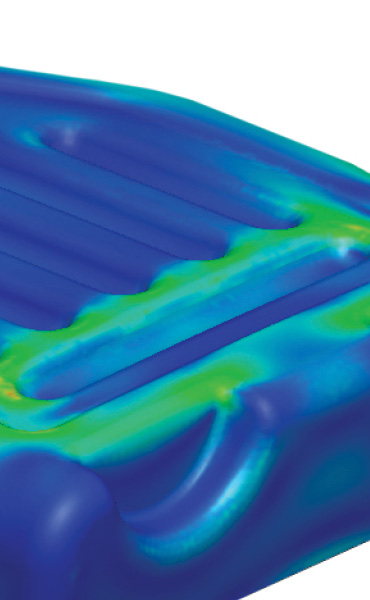

Design for manufacture and assembly (DFMA)
As the client you will have signed off a works like, looks like prototype which you will have had tested with your target market, reviewed by your marketing and branding teams, and will likely have been reviewed by a safety test house. To get to that prototype we will have considered materials and considered the design for manufacture and design for assembly, (DFM and DFA). It is the next stage - production engineering, that we will look at each component part and design it so as it can be manufactured as efficiently as possible. Different components require different manufacturing processes, metal parts are often fabricated, die cast or extruded, plastic parts are moulded, formed or extruded.
Engineering drawings
During the detail design and development stage we are working with a selection of our manufacturers and supplier, we can tune the design and cost to their processes. This helps us produce the engineering hand over package in the format that they require. For the production of moulds, we utilise 3D CAD files and a 2D drawing pack along with a PPR (product profile report).
Our high detail engineering drawing packs are used on the production line to asses the quality of each component.
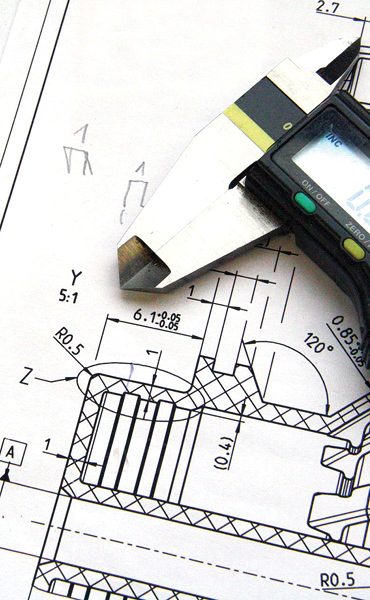
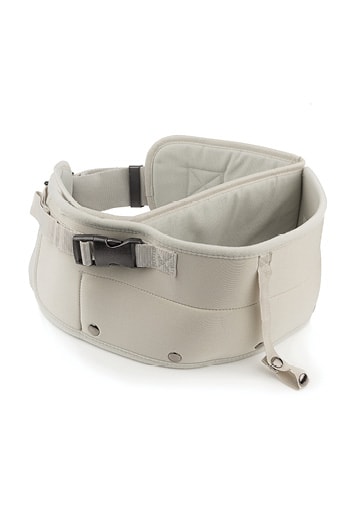
Fabrics
Many of the products we design and develop have soft elements such as bags, ruck sacks, soft toys, and baby products. Kirstin, our design manager has worked with fabrics for over 20 years and has produced outfits for fashion dolls through to designer bags. Every manufacturer, whether they are in the UK, Europe or Asia have individual preferences on how to make a product. This is discussed further in production.
Product design engineering: Mechanical FEA, prototyping & manufacture
Engineering for success
Making a one off prototype is very different to a production run. Throughout the design development phase we are always considering materials, their manufacturing processes and assembly. Often we work as a wider team integrating any electronics, mechanics or software into a production ready handover package.

Engineering overview
Every aspect of the design: every screw, bolt, and washer, every material and every manufacturing process, must be chosen and detailed in the engineering stage. Technical drawings are expanded, and we often make a final pre-production prototype before handover to the manufacturer, so they have something physical as a benchmark. Our attention to detail here has often saved clients’ money and heartache in the long run. For mechanically complicated projects, we work with our team of engineers and specialists to check that every part will perform long-term as we have specified. For projects with bespoke electronics, we team up with a group of electrical engineers and programmers who we have successfully collaborated with for years on several projects such as IoT devices.
Mechanical engineering, FEA, and FMEA
We evaluate the best process to produce each part and often carry out FEA – Finite Element Analysis, ensuring we can optimise the strength of the component, and that it will absorb stress and flex in the desired way. We may also use FMEA – Failure Mode and Effects Analysis, to analyse risk so as we can take action and reduce the possibility of failure, and to ensure that if it were to fail, it would do so safely.


Design for manufacture and assembly (DFMA)
As the client you will have signed off a works like, looks like prototype which you will have had tested with your target market, reviewed by your marketing and branding teams, and will likely have been reviewed by a safety test house. To get to that prototype we will have considered materials and considered the design for manufacture and design for assembly, (DFM and DFA). It is the next stage - production engineering, that we will look at each component part and design it so as it can be manufactured as efficiently as possible. Different components require different manufacturing processes, metal parts are often fabricated, die cast or extruded, plastic parts are moulded, formed or extruded.
Engineering drawings
During the detail design and development stage we are working with a selection of our manufacturers and supplier, we can tune the design and cost to their processes. This helps us produce the engineering hand over package in the format that they require. For the production of moulds, we utilise 3D CAD files and a 2D drawing pack along with a PPR (product profile report).
Our high detail engineering drawing packs are used on the production line to asses the quality of each component.


Fabrics
Many of the products we design and develop have soft elements such as bags, ruck sacks, soft toys, and baby products. Kirstin, our design manager has worked with fabrics for over 20 years and has produced outfits for fashion dolls through to designer bags. Every manufacturer, whether they are in the UK, Europe or Asia have individual preferences on how to make a product. This is discussed further in production.


